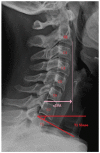Emerging Technologies within Spine Surgery
- PMID: 37895410
- PMCID: PMC10608700
- DOI: 10.3390/life13102028
Emerging Technologies within Spine Surgery
Erratum in
-
Correction: Foley et al. Emerging Technologies within Spine Surgery. Life 2023, 13, 2028.Life (Basel). 2024 May 27;14(6):683. doi: 10.3390/life14060683. Life (Basel). 2024. PMID: 38929765 Free PMC article.
Abstract
New innovations within spine surgery continue to propel the field forward. These technologies improve surgeons' understanding of their patients and allow them to optimize treatment planning both in the operating room and clinic. Additionally, changes in the implants and surgeon practice habits continue to evolve secondary to emerging biomaterials and device design. With ongoing advancements, patients can expect enhanced preoperative decision-making, improved patient outcomes, and better intraoperative execution. Additionally, these changes may decrease many of the most common complications following spine surgery in order to reduce morbidity, mortality, and the need for reoperation. This article reviews some of these technological advancements and how they are projected to impact the field. As the field continues to advance, it is vital that practitioners remain knowledgeable of these changes in order to provide the most effective treatment possible.
Keywords: innovation; spine; surgery; technology.
Conflict of interest statement
The authors declare no conflict of interest.
Figures



References
-
- Zhang H.Q., Wang C.C., Zhang R.J., Zhou L.P., Jia C.Y., Ge P., Shen C.L. Predictors of accurate intrapedicular screw placement in single-level lumbar (L4-5) fusion: Robot-assisted pedicle screw, traditional pedicle screw, and cortical bone trajectory screw insertion. BMC Surg. 2022;22:284. doi: 10.1186/s12893-022-01733-6. - DOI - PMC - PubMed
-
- Baldwin K.D., Kadiyala M., Talwar D., Sankar W.N., Flynn J.J.M., Anari J.B. Does intraoperative CT navigation increase the accuracy of pedicle screw placement in pediatric spinal deformity surgery? A systematic review and meta-analysis. Spine Deform. 2022;10:19–29. doi: 10.1007/s43390-021-00385-5. - DOI - PubMed
-
- Ringel F., Stuer C., Reinke A., Preuss A., Behr M., Auer F., Stoffel M., Meyer B. Accuracy of robot-assisted placement of lumbar and sacral pedicle screws: A prospective randomized comparison to conventional freehand screw implantation. Spine. 2012;37:E496–E501. doi: 10.1097/BRS.0b013e31824b7767. - DOI - PubMed
Publication types
LinkOut - more resources
Full Text Sources
Research Materials

